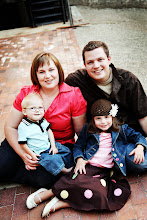Congenital Heart Defects Awareness Day is February 14th. Here are some statistics and information on CHD's:
What is a congenital heart defect?
Congenital means it is present at birth. Heart defects begin in the early stages of pregnancy when the baby's heart is forming.
What does CHD stand for?
It's the abbreviation for congenital heart defect.
How many babies are born with CHD?
Approximately 40,000 babies are born each year in the United States with a CHD. That equates to 1 out of 125 babies born with a heart defect.
It is the #1 birth defect with more occurrences than Spina Bifida, Down syndrome or hearing loss yet many are not aware of this condition.
What is the number one birth defect?
Congenital heart defects.
How many kinds of CHD are there?
There are approximately 35 different types of congenital heart defects.
How are congenital heart defects treated?
Today, most heart defects can be corrected or helped with surgery, medicine, or devices, such as artificial valves and pacemakers. In the last 25 years, advances in treatment of heart defects have enabled half a million U.S. children with significant heart defects to survive into adulthood. Need help in deciding where to go? Here's an article that will help.
Is there a prenatal test for CHD?
An echocardiagram can accurately detect many heart defects. This test needs to be performed by a specialized doctor and not an obstetrician. Some heart defects can be detected through routine ultrasound.
What causes congenital heart defects?
In most cases, scientists do not know what makes a baby's heart develop abnormally. Genetic and environmental factors appear to play roles.
Scientists are making progress in understanding the genetics of heart defects. Since the 1990s, they have identified about 10 gene mutations (changes) that can cause isolated (not accompanied by other birth defects) heart defects (3). For example, a March of Dimes grantee identified a gene that can cause a heart defect called an atrial septal defect (a hole between the upper chambers of the heart), and one that may contribute to hypoplastic left heart syndrome (underdevelopment of the heart’s main pumping chamber) (4, 5).
Environmental factors can contribute to congenital heart defects. Women who contract rubella (German measles) during the first three months of pregnancy have a high risk of having a baby with a heart defect. Other viral infections, such as the flu, also may contribute, as may exposure to certain industrial chemicals (solvents) (2). Some studies suggest that drinking alcohol or using cocaine in pregnancy may increase the risk of heart defects (2).
Certain medications increase the risk. These include (2):
The acne medication isotretinoin (Accutane and other brand names)
Thalidomide (approved only for a rare, severe skin disorder, but sometimes used for other conditions) Certain anti-seizure medications
Some studies suggest that first-trimester use of trimethoprim-sulfonamide (a combination of antibiotics sometimes used to treat urinary-tract infections) may increase the risk of heart defects (2).
Certain chronic illnesses in the mother, such as diabetes, may contribute to heart defects (2). However, women with diabetes can reduce their risk by making sure their blood sugar levels are well controlled before becoming pregnant.
Heart defects can be part of a wider pattern of birth defects. For example, at least 30 percent of children with chromosomal abnormalities, such as Down syndrome (mental retardation and physical birth defects) and Turner syndrome (short stature and lack of sexual development), have heart defects (3). Children with Down syndrome, Turner syndrome and certain other chromosomal abnormalities should be routinely evaluated for heart defects.
Heart defects also are common in children with a variety of inherited disorders, including Noonan syndrome (short stature, learning disabilities), velocardiofacial syndrome (craniofacial defects and immune deficiencies), Holt-Oram syndrome (limb defects) and Alagille syndrome (liver, skeletal and eye defects) (3).
What are some of the most common heart defects, and how are they treated?
Patent ductus arteriosus (PDA): Before birth, a large artery (ductus arteriosus) lets the blood bypass the lungs because the fetus gets its oxygen through the placenta. The ductus normally closes soon after birth so that blood can travel to the lungs and pick up oxygen. If it doesn’t close, the baby may develop heart failure. This problem occurs most frequently in premature babies. Treatment with medicine during the early days of life often can close the ductus. If that doesn't work, surgery is needed.
Septal defect: This is a hole in the wall (septum) that divides the right and left sides of the heart. A hole in the wall between the heart’s two upper chambers is called an atrial septal defect, while a hole between the lower chambers is called a ventricular septal defect. These defects can cause the blood to circulate improperly, so the heart has to work harder. Some atrial septal defects can be repaired without surgery by inserting a thin, flexible tube into the heart and then releasing a device that plugs the hole. A surgeon also can close an atrial or ventricular septal defect by sewing or patching the hole. Small holes may heal by themselves or not need repair at all.
Coarctation of the aorta: Part of the aorta, the large artery that sends blood from the heart to the rest of the body, may be too narrow for the blood to flow evenly. A surgeon can cut away the narrow part and sew the open ends together, replace the constricted section with man-made material, or patch it with part of a blood vessel taken from elsewhere in the body. Sometimes, this narrowed area can be widened by inflating a balloon on the tip of a catheter (tube) inserted through an artery.
Heart valve abnormalities: Some babies are born with heart valves that do not close normally or are narrowed or blocked, so blood can’t flow smoothly. Surgeons usually can repair the valves or replace them with man-made ones. Balloons on catheters also are frequently used to fix faulty valves.
Tetralogy of Fallot: This combination of four heart defects keeps some blood from getting to the lungs. As a result, the blood that is pumped to the body may not have enough oxygen. Affected babies have episodes of cyanosis and may grow poorly. This defect is usually surgically repaired in the early months of life.
Transposition of the great arteries: Transposition occurs when the positions of the two major arteries leaving the heart are reversed, so that each arises from the wrong pumping chamber. Affected newborns suffer from severe cyanosis due to a lack of oxygen in the blood. Recent surgical advances make it possible to correct this serious defect in the newborn period.
Hypoplastic left heart syndrome: This combination of defects results in a left ventricle (the heart’s main pumping chamber) that is too small to support life. Without treatment, this defect is usually fatal in the first few weeks of life. However, over the last 25 years, survival rates have dramatically improved with new surgical procedures and, less frequently, heart transplants (6).
Information posted was from the March of Dimes and Little Hearts Foundation.
Before I had Nathan, I was clueless to what a congenital heart defect was and how often it occurs in pregnancy. I pretty much thought that you go into the ultrasound at 20 weeks for find out if we should buy blue or pink. Boy, has my view on this subject changed drastically over the past year!
The sad thing is that CHD's occur more often than childhood cancer and that 20% of the children with CHD's will not live to see their first birthday. In the United States, twice as many children die from congenital heart defects each year than from all forms of childhood cancer combined, yet funding for pediatric cancer research is five times higher than funding for CHD.
Many of these children will need heart transplants and yet there are not many donor hearts available for this age group.
Please consider becoming an organ donor!
Nolan the Soccer Player
-
On the advise of Nolan's pediatrician and teacher, we decided to sign Nolan
up for Soccer. He really seems to enjoy it, but only on his terms.
Practices ar...
14 years ago



.jpg)






1 comment:
When I went to have my ultrasound with Allie my doctor could only see part of her heart. At that time he told me not to worry about it that he needed to see me in 2 weeks to have another ultrasound. Let me tell you those were the longest 2 weeks of my life. Lucky for me she was fine she just wanted to make things intresting. I can not imagine her being born with a CHD. When you were at my home a bit ago you truly inspired me to be a better mom to my kids. You and your husband are truly blessed with Nathan. He is suck a great sprit. I pray that someday they can find how these CHDs happen and can cure them prior to birth!
Post a Comment